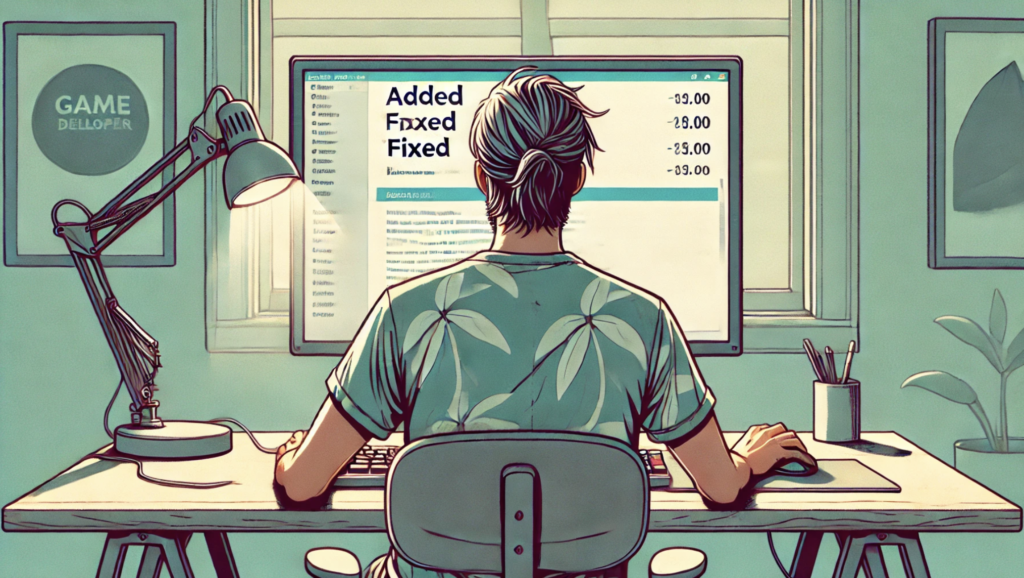A game changelog is a running record of what gets added, fixed, adjusted, or removed in every version of a game. It doesn’t vanish after a patch. It stays as a permanent history, so anyone can see how the game changed from one update to the next.
Players want that level of clarity because it reduces confusion after updates. Balance tweaks, bug fixes, new content – An easy-to-read log shows what’s new and what got resolved. It builds trust, reduces surprises, and helps with mod or save file compatibility.
Studios rely on changelogs too. QA teams track when issues were fixed. Support teams reference exact fix IDs to solve tickets faster. Marketing ties features to version numbers. Stores like Steam and Epic require accurate summaries for certification.
For anyone wondering what a game changelog is or how to make one that helps players, BySolopreneurs has a helpful guide.
How to write a simple game changelog format
Players read changelogs to see what’s new, what broke, and what got better. A clear format saves time for everyone and stops confusion when an update lands. It also keeps the whole team aligned so nothing slips through.
Start with a version header: version number and release date. Example: v1.2.0 • 2025-03-14. Then group entries by type so readers jump to what they care about.
- Added: New features or content
- Changed: Updates to existing features
- Fixed: Bugs and glitches resolved
- Performance: Speed or stability improvements
- Balance: Fairness tweaks
- Removed: Features or items taken out
- Known Issues: Problems still present
Use short bullets and plain language. Avoid technical terms. Say “Improved frame pacing on Xbox Series X during large battles (up to +18% 1% lows)” instead of “refactor renderer.” Readers see the impact right away.
Track each item behind the scenes with an internal ID tied to a bug ticket or commit, for example [BUG-1423]. Keep those IDs out of the player-facing notes. Store them in source control or markdown comments so the team can trace every change later.
Call out platform-specific items. Tag them clearly, like [PS5] or [Switch], when a change applies only to certain players. No guessing.
This setup scales as the game grows. It keeps the format simple, the language clear, and the changelog useful for both players and developers.
How to update games and publish changelogs players read
Clear update notes matter as much as the code. Players need to see what changed and why it matters. Set a release-to-publish process the whole team can follow without guesswork.
Freeze the code, then pull an automatic diff from commits to capture every tweak. QA turns raw changes into plain bullets players can read fast, and a project manager signs off on scope. Localize the notes so global players feel included. When everything’s set, publish in one push on the website’s changelog archive, in the launcher, and on store pages. Tag the build in git, for example v1.3.0.
Platforms work differently. Steam needs patch notes per Depot or Branch. Epic asks for Release Notes in the Dev Portal. Consoles want change descriptions inside TRC/XR submissions before approval. Keep a master changelog on the studio site as the source of truth, then link out to stores to avoid drift.
Use consistent verb tenses and straightforward phrasing throughout the notes. If a feature or fix gets rolled back, state it upfront. Call out changes that affect saves or balance at the top to catch attention. Include a Known Issues section so players understand current limits. Make the archive easy to browse with search, pagination, and RSS feeds.
Test notes with a small player group first. Fresh eyes flag unclear phrasing faster than the developers who wrote it. Share the final version with confidence, and focus on how to update games changelog content the right way. This approach clarifies game update notes vs changelog roles and aligns with game changelog best practices.
